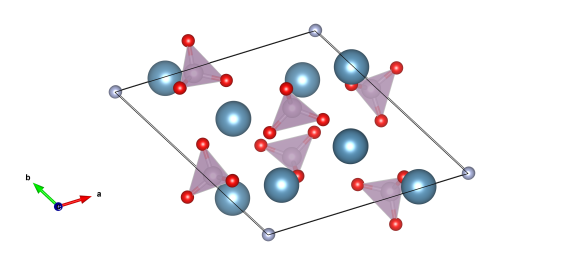Biominerals #3 – Francolite, a mineral in fossilized Dinosaur bones
What does it look like?

Red atoms are oxygen, light blue calcium, purple are phosphorus and the grey atoms are the fluorine positions. Image generated by the VESTA (Visualisation for Electronic and STructural analysis) software http://jp-minerals.org/vesta/en/
What is it?
The process of fossilisation is pretty complex. Much depends on what the material was to start with (bone, teeth or shell perhaps). As these are buried and the long slow process of fossilisation starts, the atoms in the structures can be replaced by those in the surrounding rock. Once the replacement gets to a certain point it will change the crystal structure of the starting material.
One such mineral that is one endpoint to this process is Francolite. Francolite is a carbonate fluorapatite – closely related the the hydroxyapatite structure found in our teeth. Here the metal atoms in the structure and the water have, over time, been replaced by carbonate (CO3) and fluorine. In particular, the discovery of francolite in dinosaur bones can give clues to the changing conditions of the sediments that surrounded them as the fossils formed.
Where did the crystal structure come from?
Francolite is still a poorly understood mineral, because of the big variation in the amount of flourine incorporated into its structure. The image of its crystal structure we've presented is #9009978 in the Crystallography Open Database.






